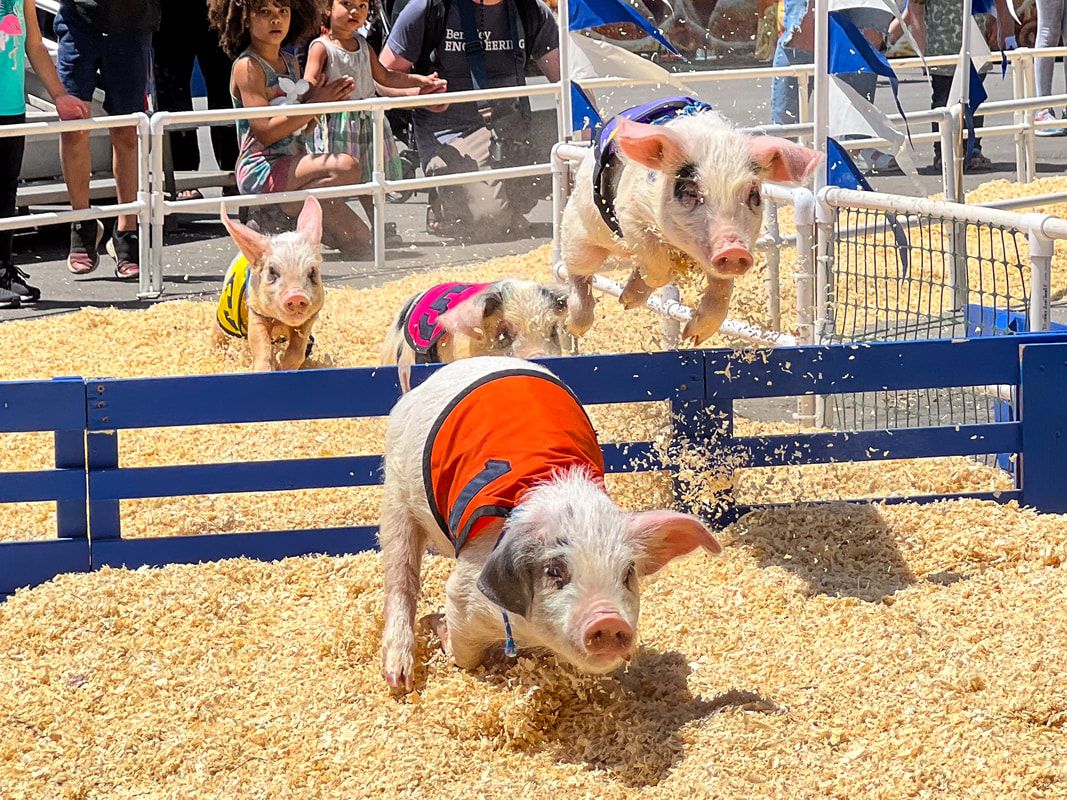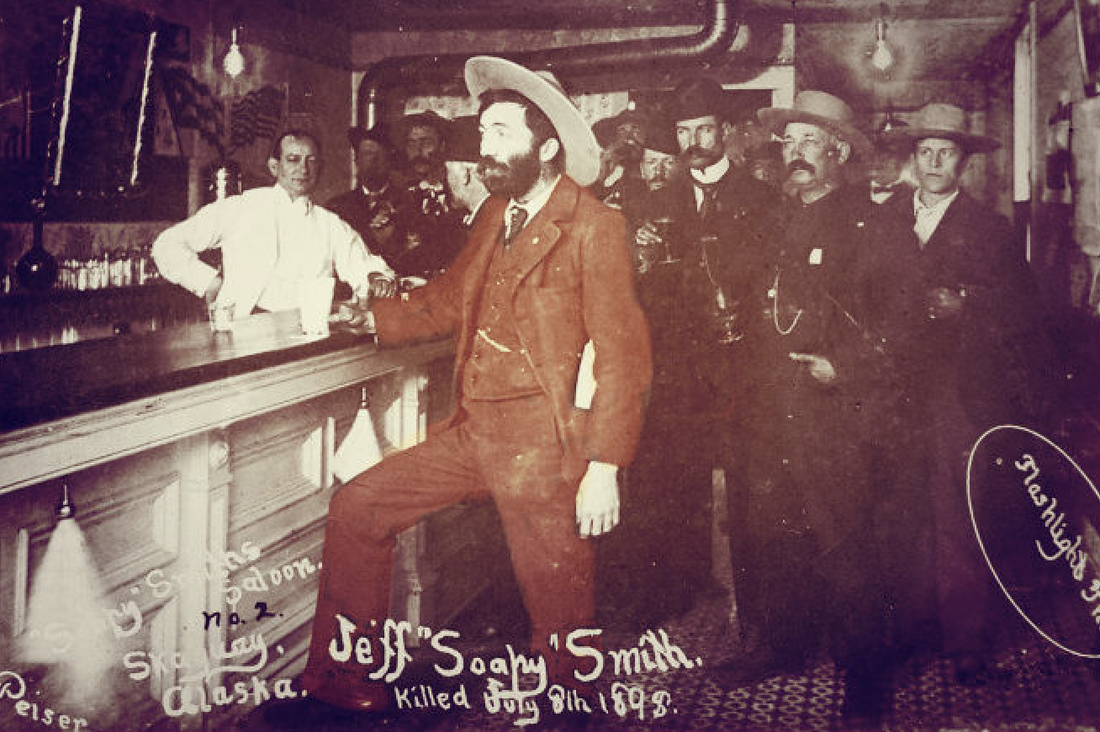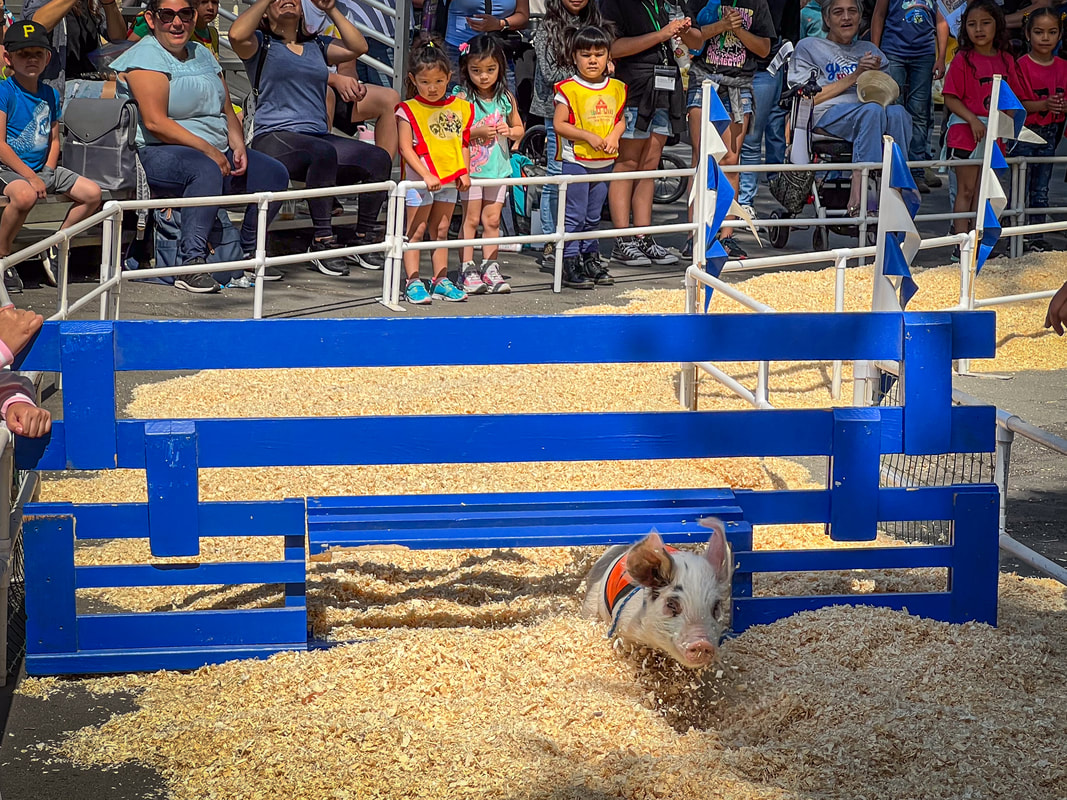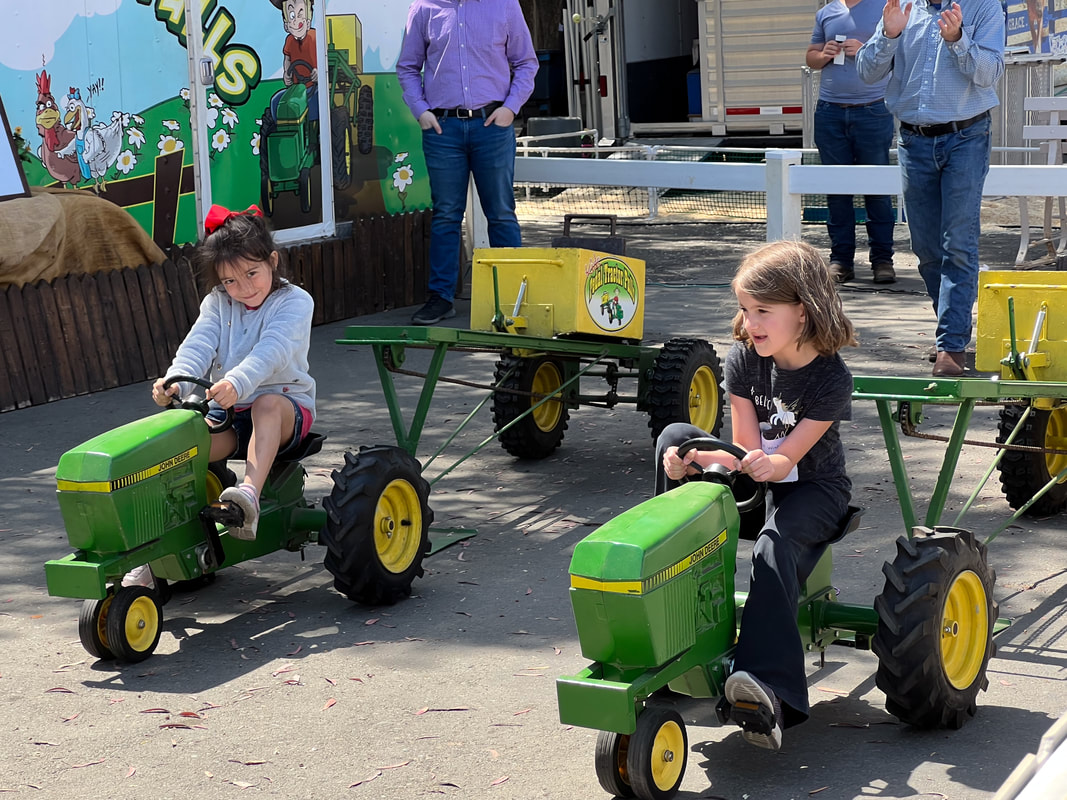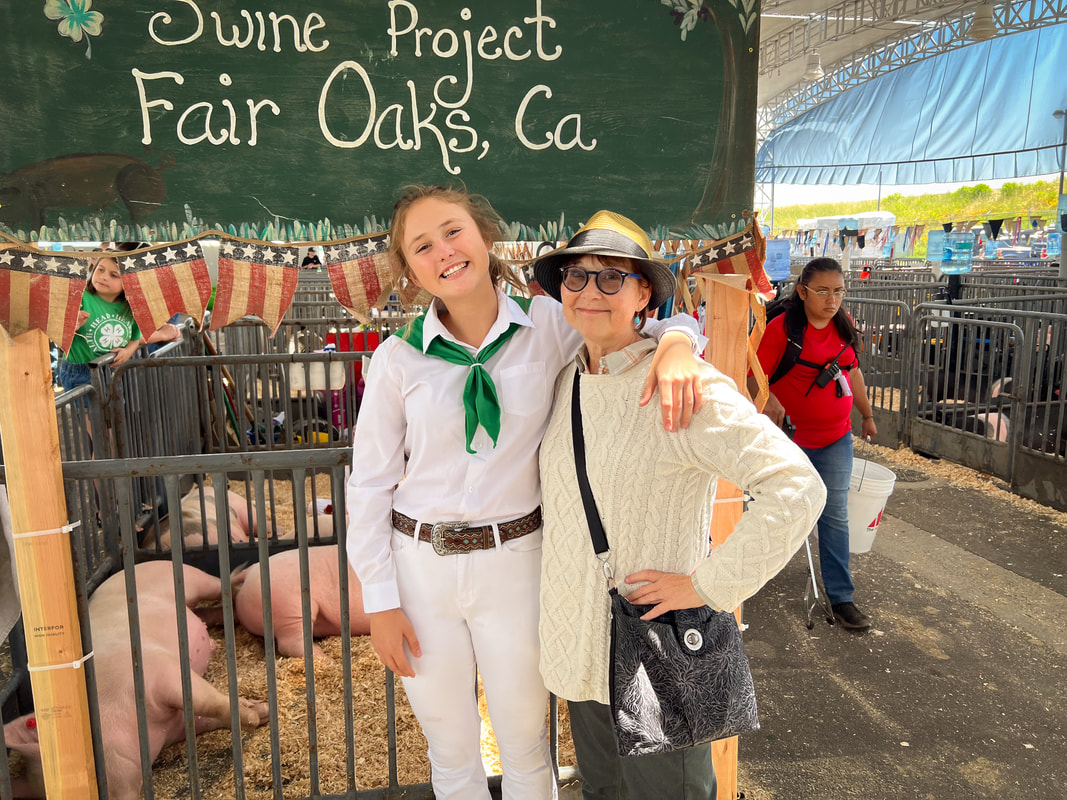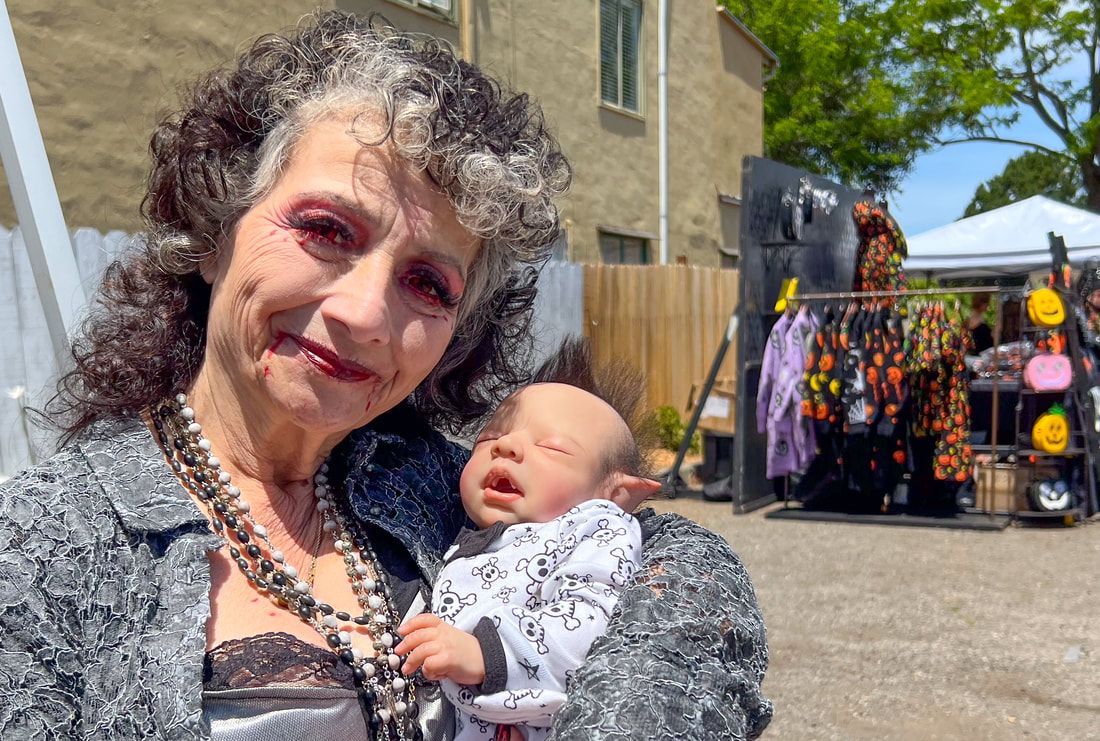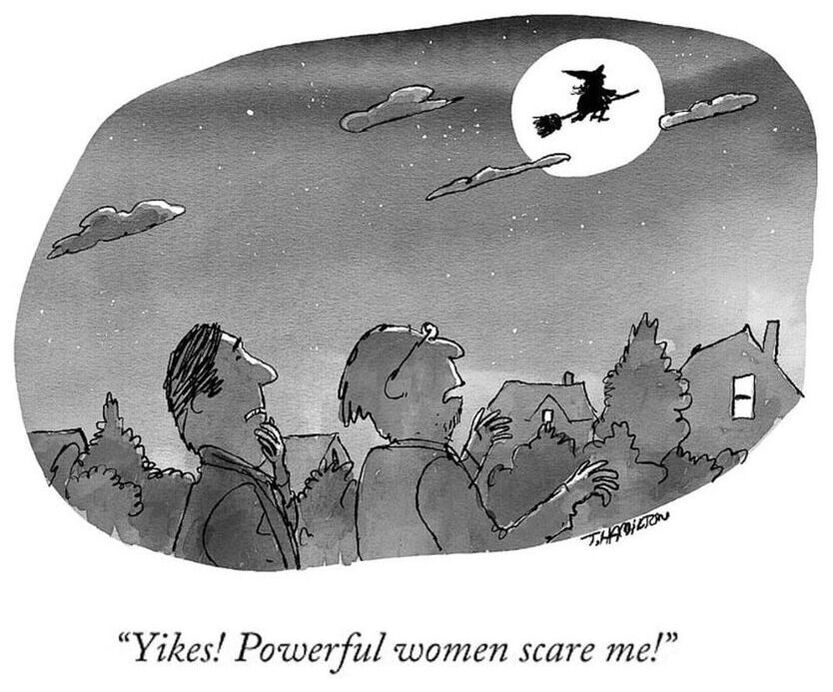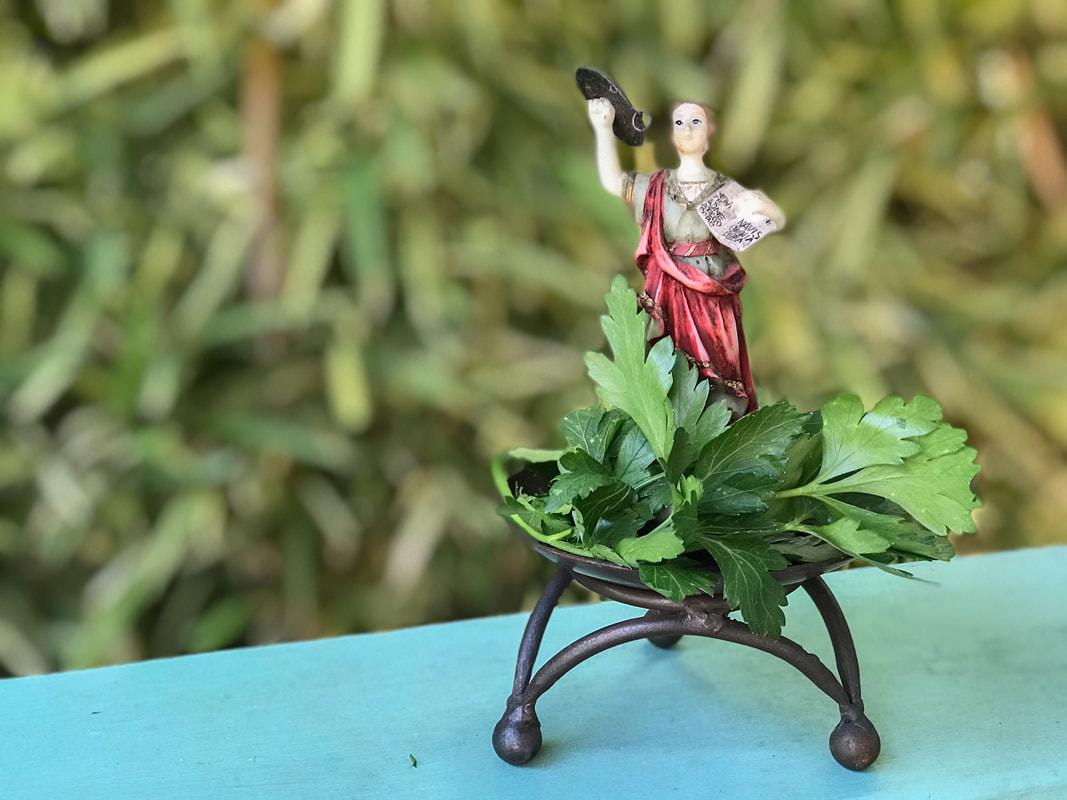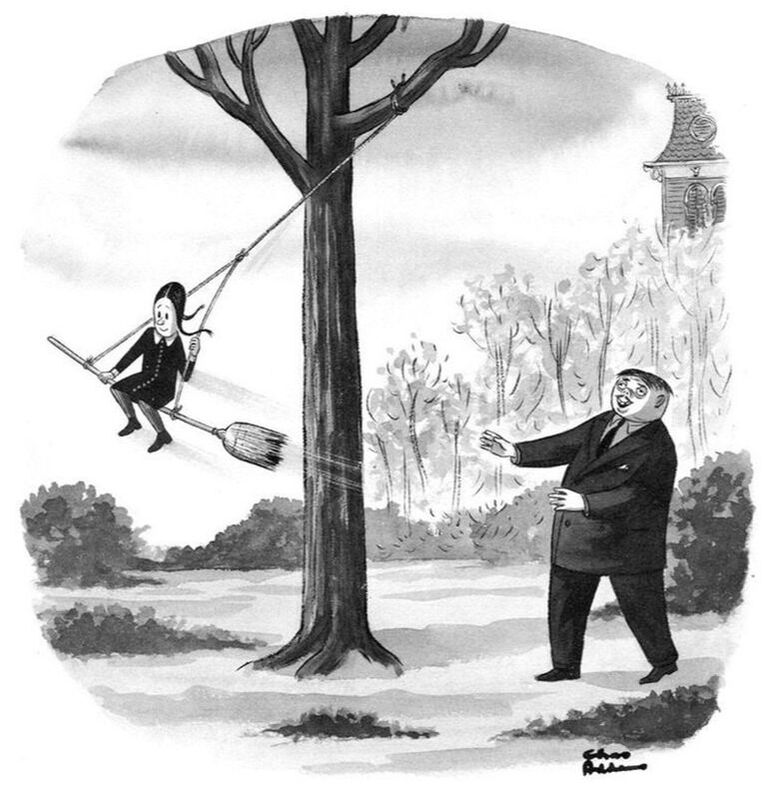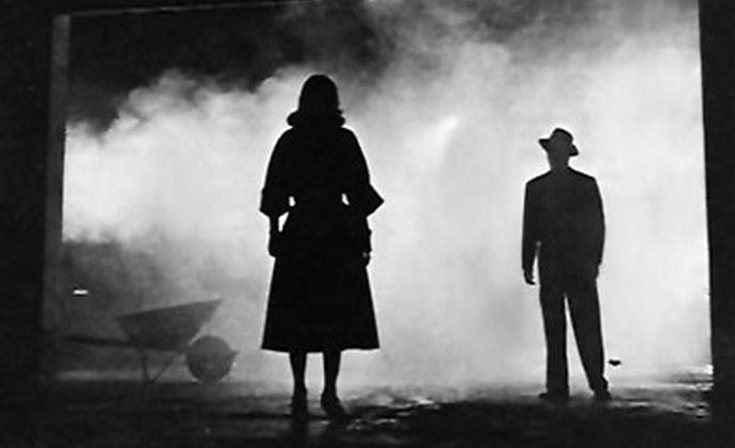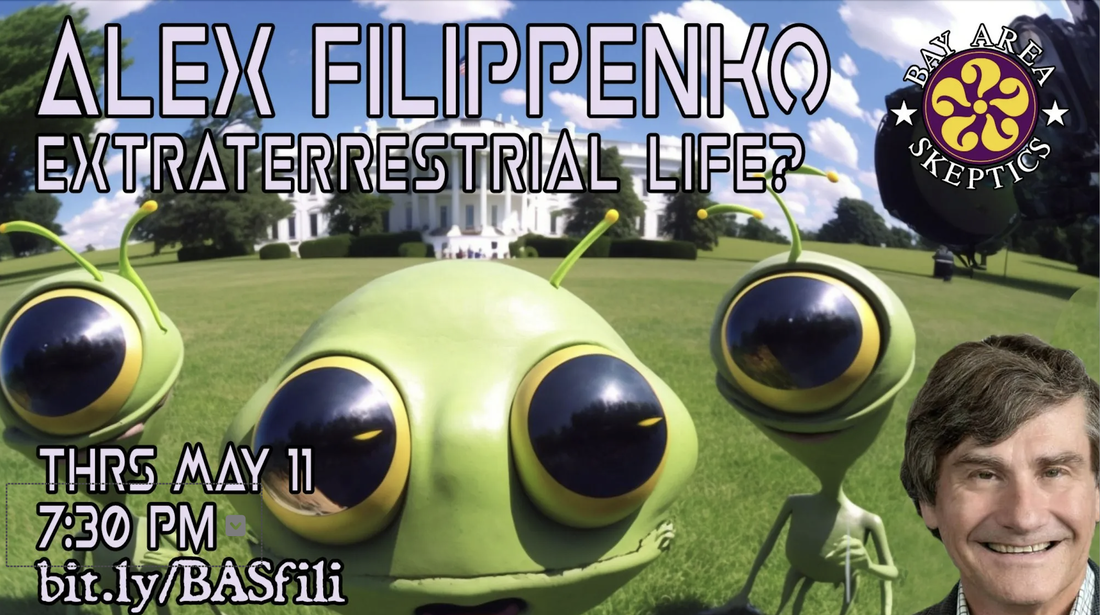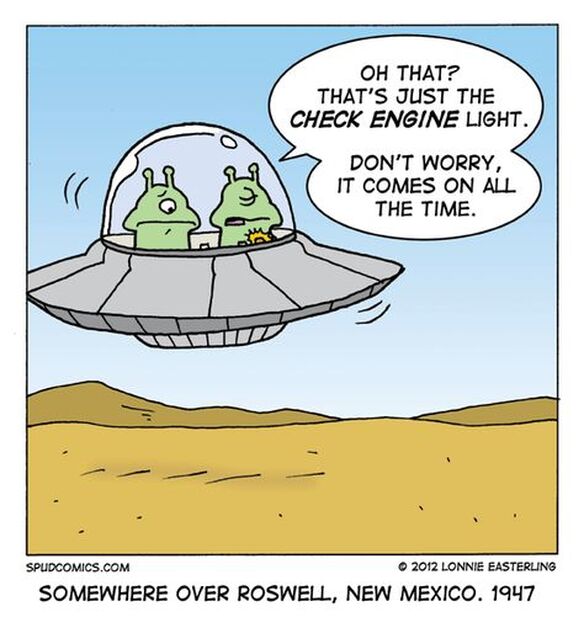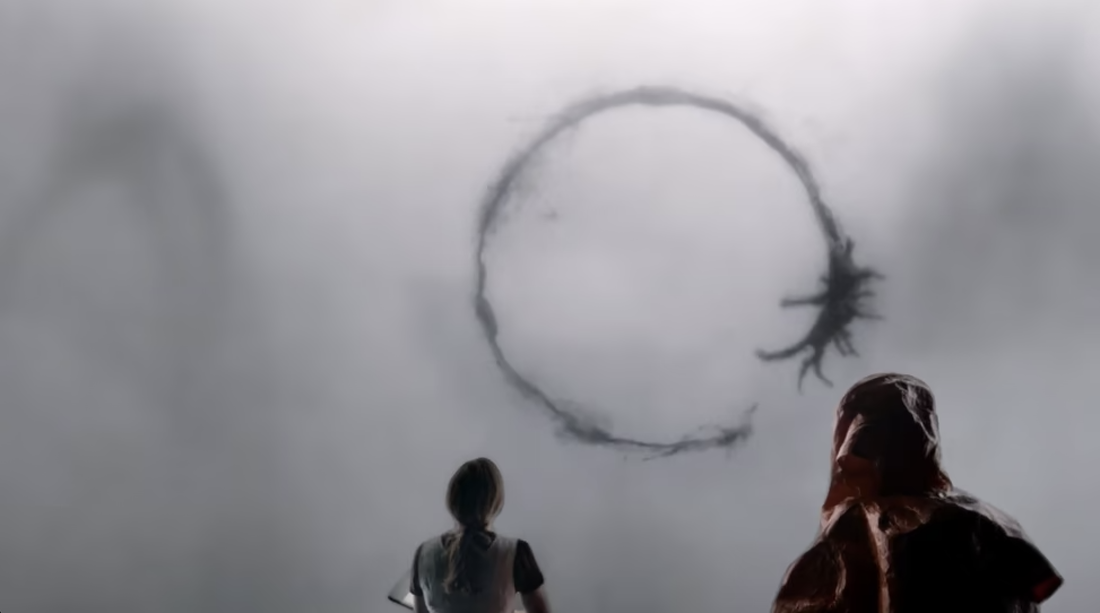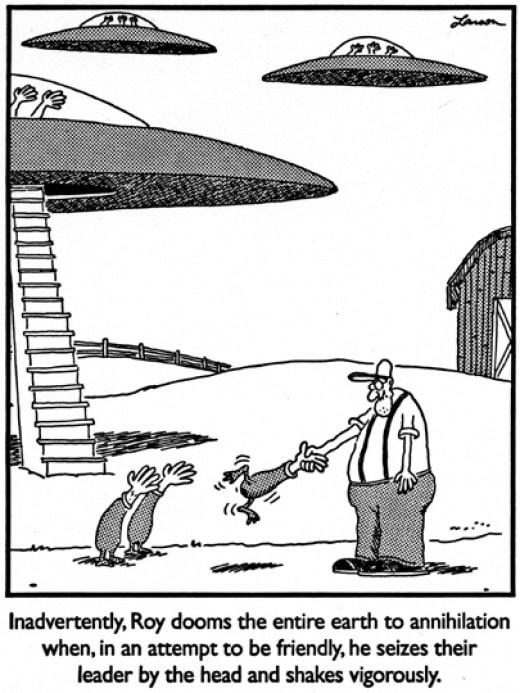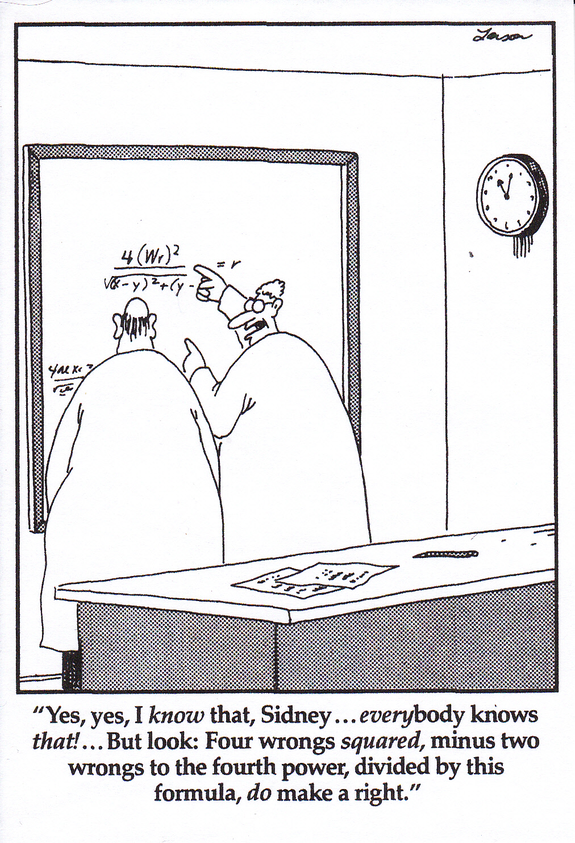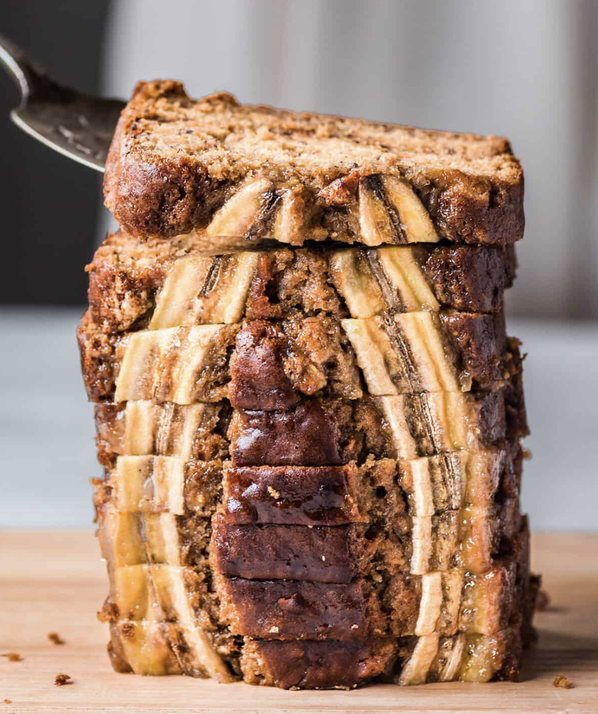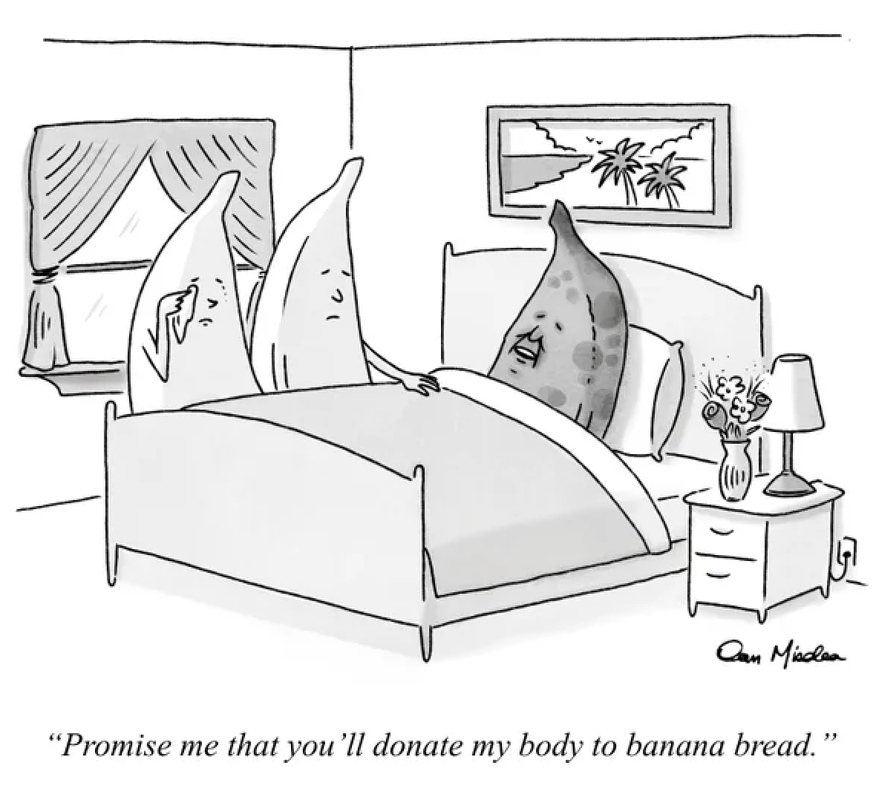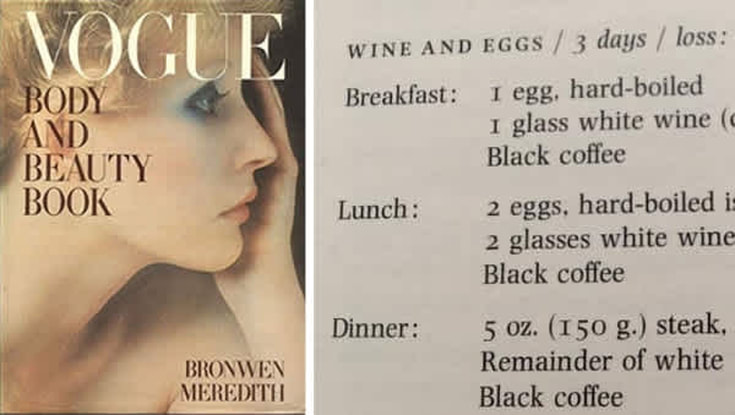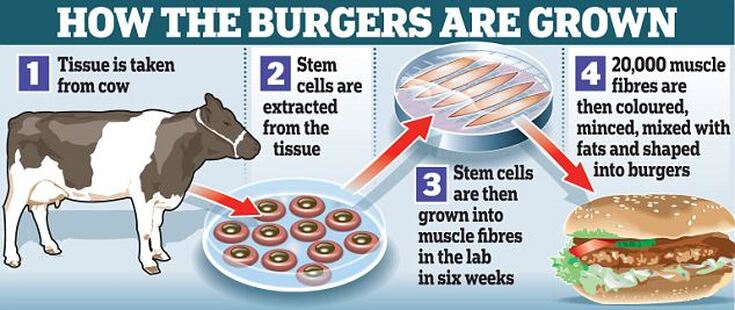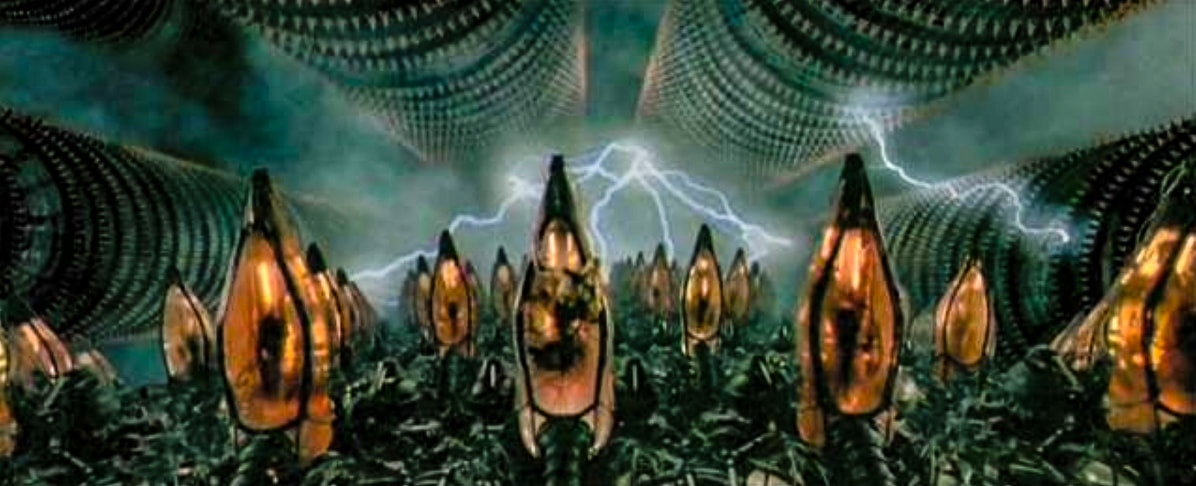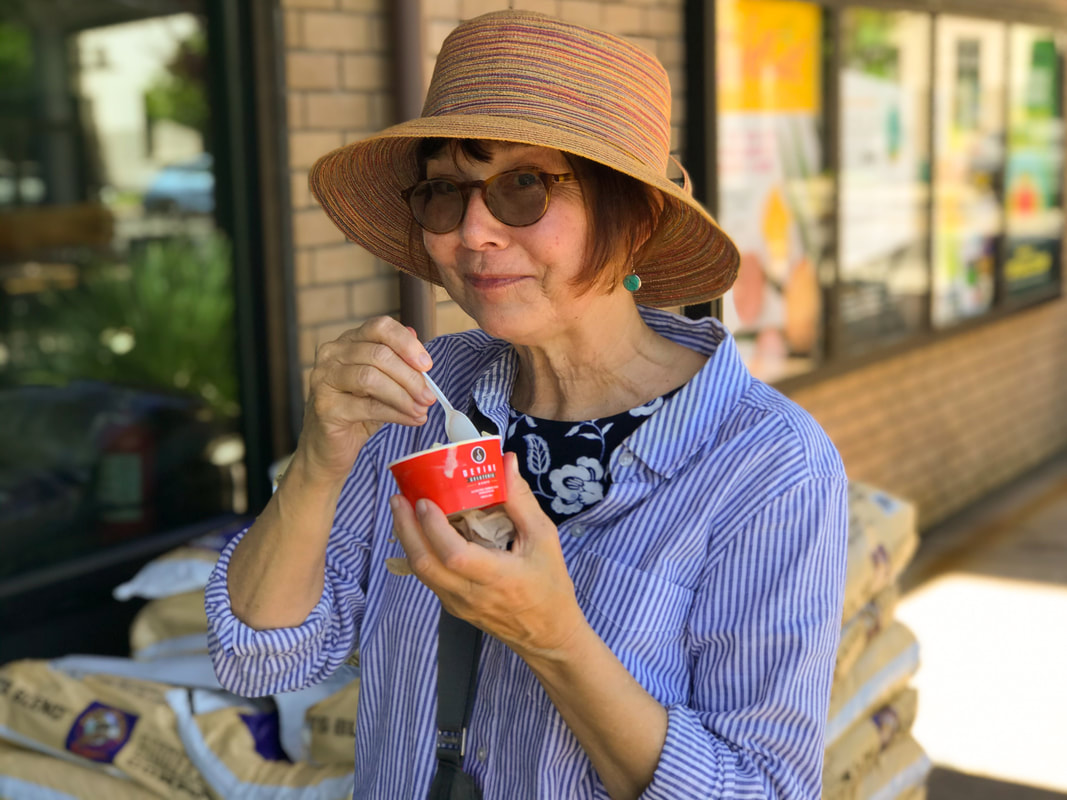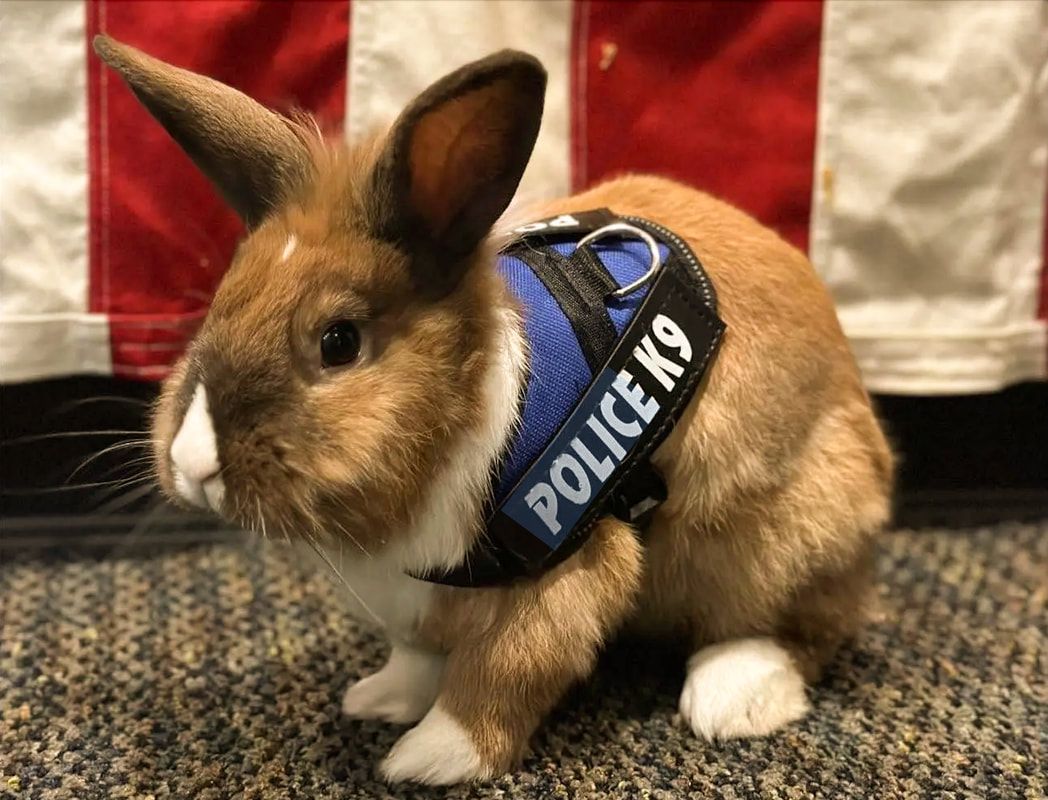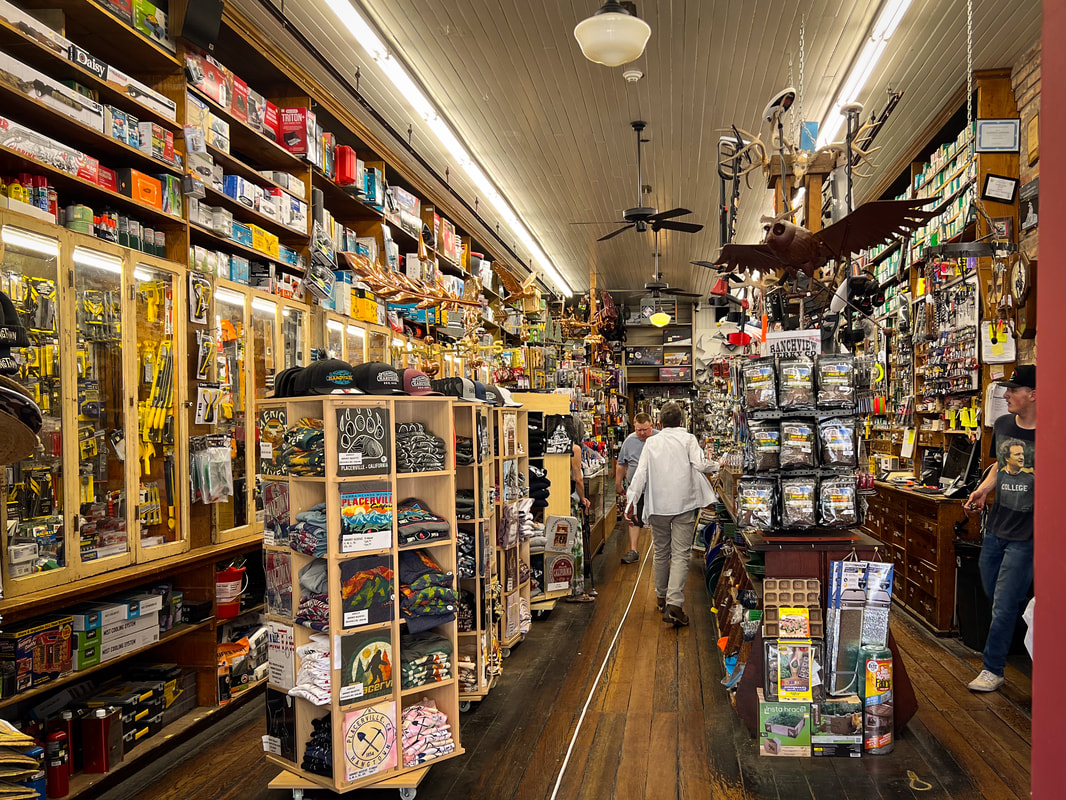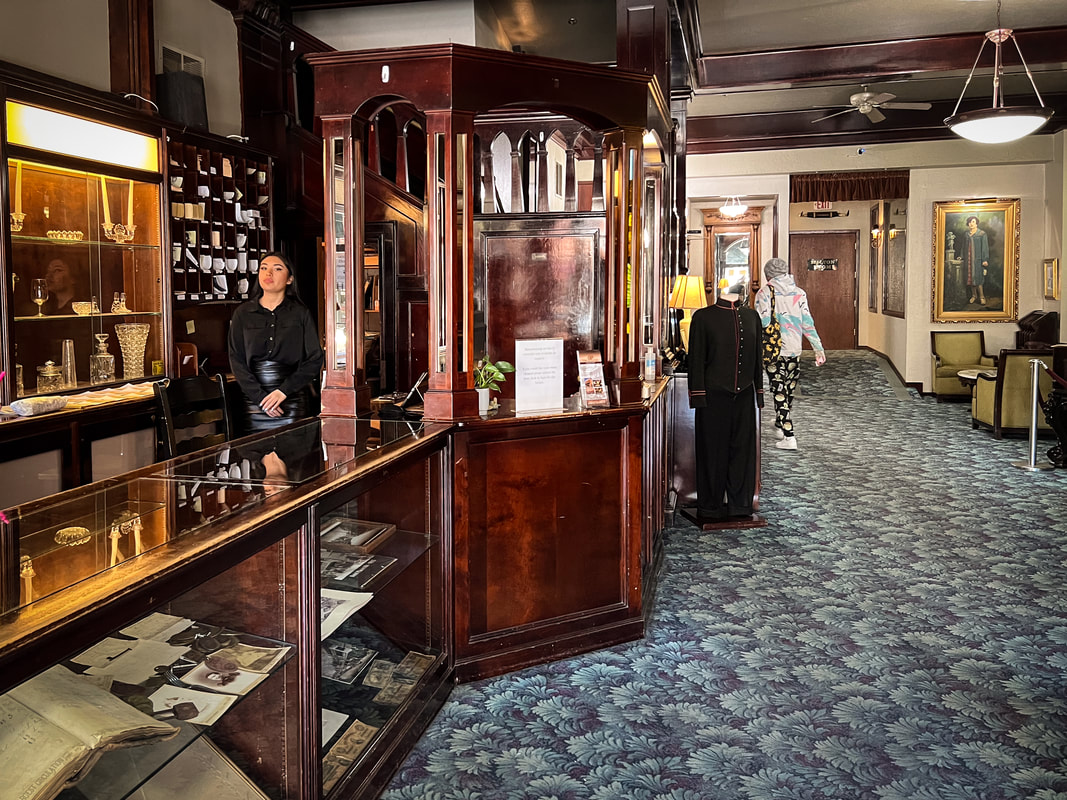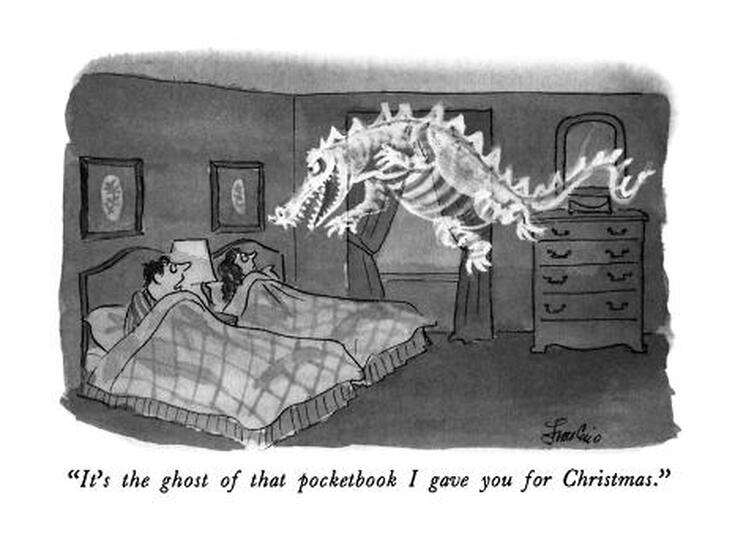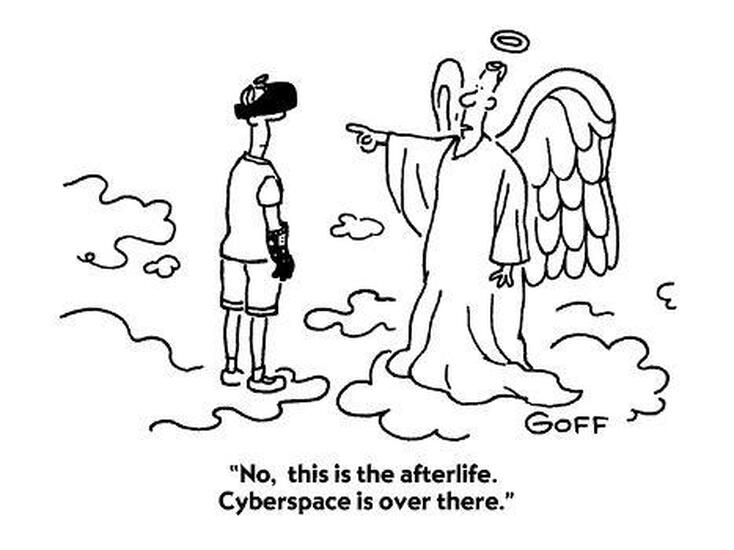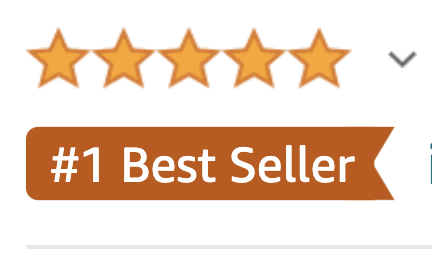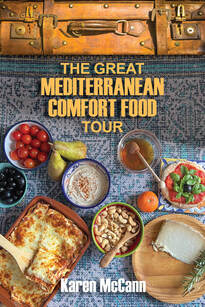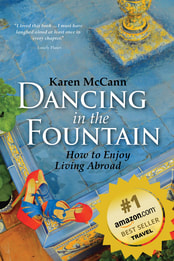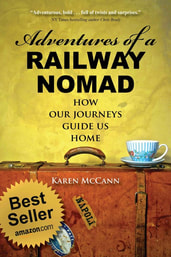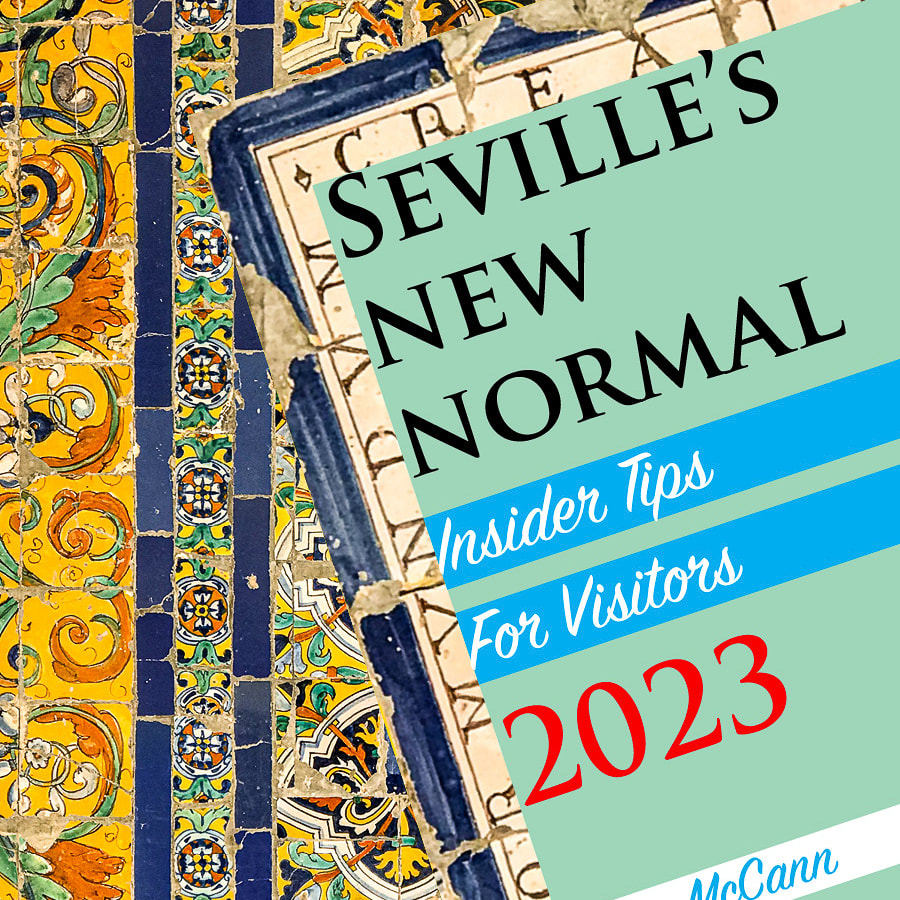|
In the noble sport of pig racing, the first thing that comes charging out of the starting gate is a flock of terrible puns. “You Never SAUSAGE a Show!” proclaims the gaudy trailer of the touring athletes, who sport names such as Shaquille O'Squeal, Luke Sky Porker, Lady Hoga, and Spongehog Porkpants. These are the famous All Alaskan Racing Pigs, now performing up and down the West Coast and operating out of Oregon because the commute got boar-ing. When I learned they’d be showcased at the Sacramento County Fair, I could hardly wait to see these superstars in person. Pig racing follows a simple format: an oval sawdust track, chutes for four baby pigs, and enough chow at the end of the run to motivate the little porkers to hustle their trotters. Their humans keep fairgoers cheering and laughing by showering them with fun pig facts and bad puns. Occasionally one of the young porkers loses the plot and wanders off to investigate the audience or nibble a little dropped popcorn, but for the most part the participants thunder over the finish line and dash to the trough where they go hog wild over their reward chow. After showing off their speed in the flat races, the piglets demonstrate their agility by leaping hurdles as high as their own heads, flying through the air with keen eyes, flapping ears, and surprising grace. Then comes Soapy Smith’s solo performance. Soapy is named after a famous Alaska con artist who made a fortune selling soap with prize money tucked into the wrappings of some bars — which somehow always found their way into the hands of his cronies. “And this little pig is equally slippery,” says the announcer. “He’s got big ideas and is always strutting his stuff. He wants to show off with a higher jump.” A pig wrangler adds an extension that nearly doubles the hurdle’s height. “Think that’s high enough?” The crowd yells “Yes!” The announcer looks over at the piglet in his chute. “Nope, Soapy wants more.” Another extension is added. Soapy eyes the proceedings with the poise of a seasoned pro. No fear. And then the chute’s gate flies up and Soapy flings himself onto the track. He passes like greased lightning, a blur around the bend, and then he reaches the impossibly high jump. Unfazed, he pokes his snout into a tiny flap at the base and slithers under the hurdle. The crowd laughs uproariously, and Soapy swaggers over to the victory trough. This sure-fire crowd-pleaser began with a single brilliant moment of inspiration back in 1987, when an assistant fair manager named Bart Noll happened to read an article about pig races in an industry magazine. “All I needed to hear were ‘pigs’ and ‘races’ put together and the vision of the show took place in my head. My wife and I talked it over. ‘This is what it should look like!’ And what [people] see now is roughly what we came up with. It’s designed to be a fun attraction and an educational attraction.” Not everyone loves the idea of racing pigs. Some consider it in poor taste, if not outright animal cruelty. Prompted by protests from animal activists, investigations of the sport have been undertaken by veterinarians, civic groups, and sponsors including charities, fairs, and pubs. In the end, it’s deemed harmless fun, with animals getting plenty of exercise, siestas in air-conditioned trailers, and generous chow. It sure beats living in a cage or crowded pen awaiting their final destiny. And with All Alaskan Pig Races, at least they are spared the indignity of having jockeys on their backs. Surprisingly, nobody seems to object to the All Alaskan Racing Pigs organization’s other event, the one involving young humans. Known as Pedal Pullers, the race requires youngsters, some little more than toddlers, to propel miniature tractors toward a finish line while hauling a trailer that gets progressively heavier. I’ll be honest, the kids seemed to be suffering a lot more than the pigs, straining their little legs and in many cases curdled with humiliation at being unable to finish the course. And they don’t even get fed treats afterwards. But hey, if it’s OK with the kids and their families, who am I to judge? It's all part of the general nuttiness of county fairs everywhere. The one nearest you may not have flying pigs, but there's bound to be something looney, whether it's sheep races, alligator wrestling, or Texas-style fried beer (yes, it's a thing). I always find something to love at a fair: the oddball competitions, the zany vendors, and of course, the amazing animals. 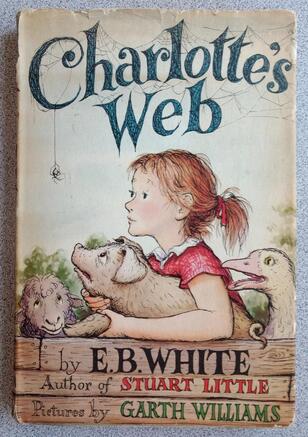 At one point I found myself chatting with a pig-raising 4-H Club member named Julie. She introduced me to Duke and spoke with such fondness of her 280-pound pal that I felt I’d stepped into the pages of Charlotte’s Web, the tender story of a friendship between a spider and a livestock pig. (This was hot stuff when I was in second grade. Still is.) Like the book, our conversation ended with a cold dose of reality. “Of course,” she said, “these animals are raised for consumption.” “What do you think of the new laboratory-raised meats?” I asked her. Here in Sacramento, at the northern end of the Central Valley’s $43.5 billion food industry, she would have more than an academic interest in the subject. “You mean those ‘meats’ made out of vegetables and stuff,” she said. “No. Scientists can now take some cells from Duke here, reproduce them in the lab, and grow enough tissue to make actual meat. In the lab.” The look of horror on her face was almost comical. Almost. “Are you serious? They can do that?” “Yep. It’ll be a while before it’s cost effective, but someday it’ll be on America’s grocery store shelves. And we’ll be living in a whole new world.” I left Julie looking pale and shaken; I had a feeling she’d be grabbing her phone and Googling lab-raised meat before I was out of the pig pavilion. Despite my worries about the future of meat, or perhaps because of them, there was something tremendously comforting about spending the day among prize-winning animals and the hard-working, fun-loving people who raised them. In a world on the verge of mass-consuming lab-raised protein manufactured by robots and marketed by chatbots, being among farmers felt reassuringly down-to-earth. Best of all was meeting so many delightful pigs — animals who, science tells us, test smarter than dogs and even young children. You don’t see the piglets straining their trotters trying to move tractor-trailer rigs around. As the porkers dashed over the sawdust and flew over (and under) those hurdles, they seemed to revel in the attention and applause. These little piggies are definitely smart enough to know when they’re on to a good thing. And that’s no hogwash. By mid-afternoon of a day at the Sacramento County Fair, kids and animals were all tuckered out. JUST JOINING US? THE NUTTERS' WORLD TOUR SO FAR IN PROGRESS: THE NUTTERS' TOUR OF CALIFORNIA Do You Believe in Magic? (Alameda's Macabre Market) My Close Encounter with the Skeptic Society (Outer Space) The Nutters' Guide to Modern Comfort Food (My Kitchen) Relationships: Do Humans Stand a Ghost of a Chance? (Hangtown) For Nutters, There's No Place Like California (Petaluma Chicken & Egg Day) Can Artificial Intelligence Help Me Plan the Next Nutters Tour? RECENTLY COMPLETED: THE NUTTERS' TOUR OF SPAIN Spain Never Runs Out of Offbeat Curiosities (Zaragoza, Barcelona, Tarragona) I Travel Deep into the Heart of Nuttiness (Palencia & Pamplona) Road Warriors: Let the Good Times Roar (Léon & Oviedo) Travel Alert: You Can't Always Get What You Want... (Madrid & Burgos) Gobsmacked at Every Turn but Embracing the Chaos (Jaén & Valdepeñas) All Aboard for the Nutters Tour of Spain (Packing & Organizing) WANT TO STAY IN THE LOOP? Subscribe to receive notices when I publish my weekly posts. Just send me an email and I'll take it from there. [email protected]. Curious? Enter any destination or topic in the search box below. If I've written about it, you'll find it.
6 Comments
At first I thought she was cradling a monkey in her arms. Then I realized the grandmotherly goth lady was holding a baby werewolf doll, its wizened little face covered in fine, wavy hair. With a twinkle in her eye, she set down the were-infant and picked up another little bundle of joy. “This is my vampire baby,” she said. “You can see his tiny fangs.” “Adorable,” I said. “And he has your eyes.” The bat ears, though, were all the baby’s own. This was just the kind of outlandishness I’d hoped for at the Macabre Market, “a curious coven of artists and makers inspired by Halloween, the odd, and the macabre.” Posters called it “Halfway to Halloween,” and while nitpickers might point out that technically that holiday was five months away, not six, I don’t suppose we can expect dabblers in the dark arts to be terribly strict about their math. Now before I go any further, let me reassure you that I have not embraced occult practices or goth attire. The Craft is not my path. But I was pleasantly surprised and vastly entertained by much of what I found during my afternoon among modern American witches. Everyone at the Macabre Market seemed to be having a splendid time. Swathed in ghoulish black, often sporting astonishing tattoos and plenty of metal accoutrements, they browsed happily through stalls selling Corpse Freshener soap, handbags gorgeously embroidered with cobwebs, and jewelry that would appeal to Dracula's mother. Despite the noir trappings, the atmosphere was fun and friendly, and everybody I asked was delighted to have their picture taken. As a ballgown-wearing transvestite once told me, “Honey, you don’t dress like this and hope not to be noticed!” We’ve come a long way since the days when witchcraft was a death-penalty offense. Now it’s largely viewed as yet another nonconformist spiritual tradition that gained traction in the rebellious sixties. Many practitioners consider themselves Wiccans, a modernized religion legally recognized by US courts. Contrary to popular belief, they don’t follow — or even believe in — Satan but are instead inspired by nature. And it’s a growth industry. A 1990 poll put the number of practitioners at 8000, by 2008 the US Census Bureau reported 342,000, and recent studies suggest there are 1.5 million. That’s right, witchcraft now has more active practitioners than the mainline Presbyterian church (1.4 million). Today’s covens congregate on TicToc; the hashtag #witchtok alone has amassed more than 19.8 billion views. So what’s the attraction, you ask? “The proliferation of witchcraft reflects two timeless and universal urges: the need to draw meaning from chaos, and the desire to control the circumstances around us,” according to witch Antonio Pagliarulo writing for NBC. “With the dire catastrophes brought on by climate change, wars, and the loss of rights, it’s not surprising that witchcraft appeals to those seeking to mend what’s broken in ourselves and the wider world.” Like me, Pagliarulo was raised Catholic, surrounded by miracles and mysteries. “I myself grew up with Italian folk magic passed down from generations of practitioners who melded pagan customs with Roman Catholicism,” he says. “In petitioning the archangel Michael for protection, for example, I will recite a prayer but also make offerings of wine, bay leaves, and cloves. In addition to venerating Catholic saints, I light candles to the goddess Diana at every full moon and place small bundles of rosmarino, or rosemary, on my altar to honor the dead. This blending of faiths has been a seamless process for me and other folk magic practitioners despite what traditional religious authorities might say.” All this would sound a lot loonier to me if I didn’t have a long-standing habit, picked up from my Seville neighbors, of placing fresh parsley in front of my little statue of San Pancracio, patron of health and work. The logical part of my brain knows this symbolic gesture won’t really help Rich get over his post-flu cough or make it easier for me to find the words to write this post. But symbolic gestures — from a goodbye kiss to saluting the flag — have a reassuring way of grounding us in reality. And who doesn't need more of that? Connecting with nature is one of the best way to feel grounded, according to Fiona Duncan, who teaches an online witchcraft course. Her students, she says, include a physician, a physicist, an epidemiologist, college professors, and published authors. “These people are highly intelligent and emotionally developed and yearn for something more. They believe they can find it (and they can!) through connecting with Nature’s energies and their own, which is what the Craft is all about.” Jayme Moye, a student of Natalie Rousseau's "earth-based wisdom and everyday magic," explains, “The idea is to start to notice how our own physical and mental states — our energy levels, emotions, sleep patterns, and food cravings, to name a few — are in or out of alignment with what’s happening in the natural world.” How we connect with nature is highly individual, which might explain Black Widow Bottles, the oddest of the curiosities at the Macabre Market. “Rich," I exclaimed, "am I really seeing little dead animals in jars?” Looking like they’d strayed from a mad scientist’s laboratory, the mortal remains of snakes, bats, voles, geckos, and other creatures floated behind glass, tagged with prices and backstories. “Did you pickle these animals yourself?” I asked the woman behind the table. Her name, I soon learned, was Tracy, and she was accompanied by her husband, who sat stoically at her side, looking as if he’d rather be off having a root canal or possibly even a limb amputated. “I didn’t kill them,” she said. “They’re all ethically sourced. I preserve them with formaldehyde and suspend them in 70% alcohol.” OK, but what were they for? “People collect them. I’ve been doing this for five years; my house is full of these things.” I glanced at her husband with increased sympathy. That couldn’t be easy for the non-enthusiast. The Macabre Market was held in Alameda, terminus of the first NY to SF railway journey in 1869, former site of Neptune Beach, which gave the world the snow cone and “Pop’s Sicle” (today’s popsicle), and now home to the Feathered Outlaw, a shop dispensing metaphysical supplies and services. Naturally, I popped into the shop for a look around. The shop was suitably dim and mysterious, with a cheerful young staff, esoteric products, and a tarot reading going on in the back corner. I learned it was designed as a safe place for people to explore alternative spiritual paths, a haven for those whose beliefs and lifestyle left them feeling marginalized and misunderstood. Witchcraft remains far from mainstream and no doubt still attracts a darker element today. Having been raised in the faith that gave us the Spanish Inquisition and will be forever identified with pedophile priests, I know any belief system can be perverted in horrifying ways. All I can say is that my experiences at the Macabre Market and Feathered Outlaw were considerably more wholesome and family friendly than I expected. As a writer, Nutter, and spiritual explorer, I enjoyed meeting modern-day American witches. I didn’t bring home any magic spells, baby vampires, or Corpse Freshener. But I came away with a new understanding that for some, embracing this practice enables them to be welcomed into a community and open themselves to the world in entirely new ways. And that’s its own kind of magic. JUST JOINING US? THE NUTTERS' WORLD TOUR SO FAR IN PROGRESS: THE NUTTERS' TOUR OF CALIFORNIA My Close Encounter with the Skeptic Society (Outer Space) The Nutters' Guide to Modern Comfort Food (My Kitchen) Relationships: Do Humans Stand a Ghost of a Chance? (Hangtown) For Nutters, There's No Place Like California (Petaluma) Can Artificial Intelligence Help Me Plan the Next Nutters Tour? RECENTLY COMPLETED: THE NUTTERS' TOUR OF SPAIN Spain Never Runs Out of Offbeat Curiosities (Zaragoza, Barcelona, Tarragona) I Travel Deep into the Heart of Nuttiness (Palencia & Pamplona) Road Warriors: Let the Good Times Roar (Léon & Oviedo) Travel Alert: You Can't Always Get What You Want... (Madrid & Burgos) Gobsmacked at Every Turn but Embracing the Chaos (Jaén & Valdepeñas) All Aboard for the Nutters Tour of Spain (Packing & Organizing) WANT TO STAY IN THE LOOP? Subscribe to receive notices when I publish my weekly posts. Just send me an email and I'll take it from there. [email protected]. Curious? Enter any destination or topic in the search box below. If I've written about it, you'll find it. “A warning light just came on in the car,” Rich announced Friday morning. “Saying what?” “That the warning light is no longer functioning.” “But … if it’s not functioning, you can’t trust what it’s telling you. Which could actually mean it’s functioning perfectly.” Oh, horrors. This was like that classic riddle: you come to two doors, one leading to freedom, the other to certain death, and there are two guards, one who always lies and the other who speaks only truth. You can ask just one question before making a choice. It’s the kind of conundrum that makes my head want to explode. It seemed particularly unfair of the Universe to spring that on my poor brain while it was still reeling from the previous night’s online lecture from the Bay Area Atheists/Agnostics/Humanists/Freethinkers/Skeptics, aka the Skeptics Society. The moment I’d learned one of the world’s leading astrophysicists was addressing the topic Extraterrestrial Life? I knew I had to include it in my Nutters’ Tour of California. Now, I don’t like to brag, but my home state claims 15,480 UFO sightings, the highest number on Earth (possibly in the galaxy). Thousands of close encounters have been reported in my neck of the woods by residents of Calistoga, Santa Rosa, Petaluma, Rohnert Park, and Sebastopol. And Oakland-born Alex Filippenko, astrophysics professor at University of California Berkeley, was just the guy to do the topic justice. His groundbreaking work in such subjects as black holes, supernovae, dark matter, and the expansion of the universe means that if the truth is out there, he’ll be among the first to spot it. His students love him and always vote him best teacher on campus. However — and I will be the first to admit this — I do not happen to have a graduate-level understanding of astrophysics. Ten minutes into the talk, as Filippenko burrowed deep into details of biosignatures in the JWST spectra — apparently something to do with the scarcity of water necessary for life — I pretty much lost the plot. In fact, it was all I could to not to abandon my post and nip out to the kitchen to grab a glass of wine. However I stayed put and soldiered on in complete sobriety, knowing I’d need my wits about me. When it comes to the existence of extraterrestrials, explained Filippenko, “The evidence is underwhelming.” He quoted science writer Mark West and others who have shown famous so-called UFOs to be weather balloons, optical illusions from flawed radar systems or cameras, and other Earthling phenomena. But even the most hardened skeptics can’t find reasonable explanations for all the reported sightings. And there are baffling oddities such as ‘Oumuamua (Hawaiian for “scout”), the first known visitor from another star system. OK, it appeared to be a rock with no signs of life, but it was traveling strangely fast and tumbling in a way that made it difficult to determine its dimensions. Some scientists calculate it was shaped like a pancake. Or — dare I say it? — a saucer.  "We believe it's a natural object, but we can't actually prove that it's not something artificial," said astrobiologist Karen J. Meech in her TED Talk on ‘Oumuamua. "The color, the strange shape, the tumbling motion could all have other explanations." What was certain? "We were the first to say hello to a visitor from another solar system." By the end of Filippenko’s talk, here’s what I’d grasped. If we think intelligent life is hard to find here on earth, it’s even more rare in outer space. Although there are 10,000,000,000,000,000,000,000,000 planets in the universe (give or take a couple of billion), few have water or other life supports. And then there’s the timing problem. It took four billion years and 100 billion species for Earth to come up with one creature smart and dextrous enough to invent the machines necessary to communicate and travel over interstellar distances. (I’m talking about us, in case you’re wondering.) What are the odds of it happening again elsewhere? And in the same timeframe as our own foray into space? “But he’s looking at it from a human perspective,” objected Rich. “Maybe alien life doesn’t need water to survive, or opposable thumbs to invent machines that move about in space.” “Good point," I replied. "For all we know they could be non-corporeal beings, made of pure thought, or light, or something far stranger.” So the debate continues. However diligently scientists attempt to dismiss the idea that little green men and women are visiting, two-thirds of Americans believe intelligent life exists outside of Earth. And even more surprisingly, 51% of all citizens say they are not worried UFOs pose a major security threat. Why aren’t they worried? I suspect it’s because people find it oddly comforting to think we are not alone in the universe. This month, US Surgeon General Dr. Vivek Murthy raised the alarm over the public health crisis of loneliness and isolation in our country. He wants to raise awareness and build a culture of connection, “cultivating values of kindness, respect, service, and commitment to one another,” elements sadly lacking in modern society. Is it any wonder people are attracted to the idea someone is eager to travel trillions of lightyears just to reach out to us? For decades, social scientists have lamented the trend toward social distancing — not the kind where you stand six feet apart at the bagel counter but the one where we lose our sense of belonging, spend less time with others, and draw in on ourselves. Social connection isn’t just a feel-good emotion; it increases our chances of survival by 50% and decreases our chances of dementia by about the same amount. If there was a drug that could do that, we’d all be lining up to buy it at any price. Feeling disconnected is literally a matter of life and death. And this is why nature, in her wisdom, gifted us with the emotion of loneliness. Feeling lonely sends us a powerful signal that some element in our lives has to change. It’s designed to be uncomfortable to prod us into figuring out how to fix things. Much like the warning light in our car, it alerts us that something is wrong, even if it doesn’t clearly spell out what we need to do about it. These days, whenever I feel that I’m getting too deeply ensconced in my favorite easy chair, I start researching Nutter activities. I study local newspapers and check out Meetup, a social media platform for finding like-minded enthusiasts; it’s where I found the Skeptics Society, as well as travel groups, book clubs, a pop-up drive-in movie, and people who like to gather in a pub for no real reason. My kind of folks. And yes, there are groups for those of us struggling to come to grips with the new AI chatbots. This week I signed up with Google’s Bard, a process far easier than enrolling in ChatGPT; refreshingly, it didn’t keep asking me to prove I was human. Feeling that Bard and I were off to good start, I asked it to answer the old riddle about the two doors and the lying and truth-telling guards. It thought for a few split nanoseconds and replied, “If I asked the other guard which door leads to freedom, what would he say?” (See full explanation here.) So there you have it, folks. Another mystery of the universe sorted. You’re welcome. JUST JOINING US? THE NUTTERS WORLD TOUR SO FAR IN PROGRESS: THE NUTTERS TOUR OF CALIFORNIA The Nutters' Guide to Modern Comfort Food (Vegan Cooking) Relationships: Do Humans Stand a Ghost of a Chance? (Hangtown) For Nutters, There's No Place Like California (Petaluma) Can Artificial Intelligence Help Me Plan the Next Nutters Tour? RECENTLY COMPLETED: THE NUTTERS TOUR OF SPAIN Spain Never Runs Out of Offbeat Curiosities (Zaragoza, Barcelona, Tarragona) I Travel Deep into the Heart of Nuttiness (Palencia & Pamplona) Road Warriors: Let the Good Times Roar (Léon & Oviedo) Travel Alert: You Can't Always Get What You Want... (Madrid & Burgos) Gobsmacked at Every Turn but Embracing the Chaos (Jaén & Valdepeñas) All Aboard for the Nutters Tour of Spain (Packing & Organizing) WANT TO STAY IN THE LOOP? Subscribe to receive notices when I publish my weekly posts. Just send me an email and I'll take it from there. [email protected]. Curious? Enter any destination or topic in the search box below. If I've written about it, you'll find it. And be sure to check out my best selling travel memoirs & guide books here.
“Unless you’ve been living under a rock,” I read on a food blog, “you’ve likely heard of aquafaba.” Oh dear Lord, I thought. What fresh hell was this? Having plunged deep into vegan cooking sites in search of a treat to make for my sister’s upcoming visit, I discovered several promising recipes requiring this unknown ingredient. In my experience, such outliers generally require a road trip to Whole Foods, an expenditure of upwards of $25, and an hour of YouTube tutorials. Still, the banana bread looked yummy, so I read on. Astonishingly, aquafaba turned out to be nothing more than the juice from a can of chickpeas, apparently a good substitute for eggs. Hmm, I had a can in the cupboard that was only two months past its use-by date. This could work! As I opened the chickpeas, I reflected that aquafaba might be new to me, but it wasn’t all that peculiar; in fact, in the context of America’s loonier food fads (many originating here in California) it was downright upright. While mashing the bananas, I thought about my college roommate who got swept up in a — would we call it a cult? Let’s say a group of kids following a self-help guru who insisted purple foods were karma boosters. Everyone in our house ate a lot of purple cabbage, blueberries, and raspberry ice cream that year. And no, I didn’t feel any closer to nirvana — except when eating the raspberry ice cream, of course. Prior to her purple foods phase, this particular roommate was always trying to lose weight. She posted a sign on the refrigerator that read, “Minutes of pleasure equal hours of guilt, weeks of discomfort, and years of life lost.” The rest of us cheerfully ignored the warning, munching as much chocolate as our slender budgets would allow, while the dieting roommate insisted she’d rather eat grapefruit. Thus proving once again the wisdom of the adage, “When people go on a diet, the first thing they lose is the ability to tell the truth.” The late twentieth century saw plenty of other goofball slenderizing regimens, such as the Sugar Diet ("keeps your energy up — and your appetite down") launched by — you guessed it — the Sugar Association. The Cookie Diet worked on much the same principle. Observing that you can’t eat while unconscious, the Sleeping Beauty Diet advised extra slumber and no stinting on sedatives. Elvis Presley tried it and snoozed for days, skipping his favorite nosh, Fool's Gold Loaf — a loaf of French bread filled with a pound each of bacon, peanut butter, and grape jelly. Yes, bypassing that 8000 calorie meal had to be a step in the right direction. Vogue publicized the dubious Wine and Eggs Diet. For breakfast you had a hard-boiled egg, a glass of white wine, and black coffee. Lunch was the same but with two glasses of wine. Dinner was grilled steak, black coffee, and the rest of the wine. Supposedly in just three days, you’d shed five pounds. And you’d probably find yourself following the Sleeping Beauty Diet while you were at it. Two diets for the price of one. It's easy to laugh at those old-school ideas now that we know how unhealthy and ineffective they are. (Sorry, were you planning to try the Cookie Diet? Don’t bother; sadly it doesn’t work.) No doubt future generations will have lively opinions about today’s trends, such as fasting, paleo, and keto. And remember those fake meats, Impossible and Beyond Beef, that were going to save our health and the planet’s? They’ve fallen from grace now, mostly because consumers found them unconvincing imitations. What’s next? That would be lab-grown meat, authorized for sale in Singapore in 2020 and headed soon to US supermarkets. Proponents like to call it “slaughterless meat,” pointing out it eliminates animal cruelty as well as the environmental damage of intensive farming. How does it work? Cells extracted from a living creature are grown in stainless steel vats until they becomes muscle tissue bulky enough to be cooked and eaten. “The process of making cultivated meat is similar to brewing beer, but instead of growing yeast or microbes, we grow animal cells,” said Uma Valeti, founder and CEO of Upside Foods in Berkeley, CA. While I respect the potential benefits, I can’t really get past the yuck factor. I keep picturing that scene from the Matrix. Another food regimen that smacks of sci-fi run amok replaces meals with nutrition capsules. “Our goal with the Food Pill Diet is to make it incredibly easy to lose weight by eliminating hunger while on a lower-calorie, planet-friendly, plant-based diet,” says the website. “This science was developed at the NASA Ames Research Base in Mountain View, CA, where we discovered that hunger could be eliminated if food could be delivered to body without tasting or smelling it.” OK, no. I have to draw the line here. It’s not just the cost, a hefty $449 for the starter kit and a monthly fee of $698, presumably for the rest of your life. What really sticks in my craw is the idea of eliminating the pleasure of eating. The smell and taste of a good meal is a joy that nourishes body and soul. If we’re lucky enough be gathering at the table with congenial companions, while we’re passing around the platters we’re also sharing the sweet, savory, even sour notes of life, letting us taste the full range of human experience. Comforting, delicious meals remind us life can be fun; they bring us the kind of pleasure that smooths life’s rough edges and mellows out a nerve-wracking day. “After a good dinner, one can forgive anybody,” said Oscar Wilde, “even one’s own relatives.” Our lifelong love affair with food is as complex and rewarding as any personal relationship. There’s nothing wrong in flirting with alternative diets, even the nutty ones, so long as you make sure they are non-toxic. As I slid the bread dough into the oven, I found myself wondering whether chickpea juice would turn out to be a keeper or just the latest banana oil (Roaring Twenties slang for frivolous nonsense). “The bond between food and me is like other relationships in my life: complicated, evolving, demanding, and in need of constant work,” said Ashley Graham, a plus-size model and activist advocating body positivity and self-acceptance. “But together we’ve come so far, moving from my childhood obligation to clean my plate, to a mindless need to fill up, to a truly nourishing and pleasurable exchange. That’s the real reward.” As I learned during those long-ago college days, you can feel full of angst before you eat raspberry ice cream, and again afterwards, but while you are actually spooning it into your mouth, you know for a fact that life really is a glorious miracle. And that afternoon I discovered you can say the same thing about a really good vegan banana bread. (And yes, you can find the link to the recipe below.) THE RECIPE Seriously the Best Vegan Banana Bread JUST JOINING US? THE NUTTERS WORLD TOUR SO FAR IN PROGRESS: THE NUTTERS TOUR OF CALIFORNIA Relationships: Do Humans Stand a Ghost of a Chance (Hangtown) For Nutters, There's No Place Like California (Petaluma) Can Artificial Intelligence Help Me Plan the Next Nutters Tour? RECENTLY COMPLETED: THE NUTTERS TOUR OF SPAIN Spain Never Runs Out of Offbeat Curiosities (Zaragoza, Barcelona, Tarragona) I Travel Deep into the Heart of Nuttiness (Palencia & Pamplona) Road Warriors: Let the Good Times Roar (Léon & Oviedo) Travel Alert: You Can't Always Get What You Want... (Madrid & Burgos) Gobsmacked at Every Turn but Embracing the Chaos (Jaén & Valdepeñas) All Aboard for the Nutters Tour of Spain (Packing & Organizing) WANT TO STAY IN THE LOOP? Subscribe to receive notices when I publish my weekly posts. Just send me an email and I'll take it from there. [email protected] Curious? Enter any destination or topic in the search box below. If I've written about it, you'll find it. When I heard California was adding rabbits to city police forces, I have to admit I was a bit flummoxed. What were they supposed to do, investigate the case of Peter Cottontail and the missing carrots? Unravel the mystery of how the Easter Bunny produces all those eggs every spring? But then I learned the animals were “wellness officers,” responsible for snuggling with fellow cops in need of a little emotional support and stress relief. And who couldn’t use more of that in their day? In Yuba City, an old Gold Rush town just north of Sacramento, Officer Ashley Carson recently found a rabbit in the middle of the street. Instead of arresting him for obstructing traffic, she recruited him, and Percy has now joined the elite corps of California’s bunnies in blue. A little further south in Sonoma County’s Wine Country, the Healdsburg Police Department is already on its second rabbit. When Norman retired in 2017, the lop-eared Speedy volunteered to cover his beat, nurturing the hearts and minds of his human co-workers. I was trying to imagine what the state’s original settlers would have thought about this warm, fuzzy approach to policing when I visited historic Hangtown last weekend. The name comes from the Gold Rush era, when prospectors, adventurers, and scallywags arrived in droves. One night townsfolk caught men trying to rob a Mexican gambler. There was no police force (human or rabbit) so when the neighbors learned three of the would-be thieves were wanted criminals, they dispensed with a trial and hung them the next morning from the old oak in the center of town. The execution — or mob lynching, depending on your viewpoint — gave the town a badass reputation that seemed to delight its residents. Eventually cooler heads insisted on giving the town a name less harmful to its real estate values, and officially it’s now called Placerville. But the Hangtown legacy lingers on. As do the spirits of many who died there. Just about every one of the old buildings lining Main Street has a tale of hauntings, apparitions, and odd paranormal pranks. Take the Placerville Hardware Store, the oldest continually operating hardware store west of the Mississippi. For the past sixty years it’s been run by the Fausel family, who have grown quite used to “the entities.” Ghostly women cleaners are said to leave feathers from their dusters around the store, and odd wisps of smoke are attributed to a fellow who died in a fire. And then there are the cold spots, like the one described by ghosthunter Linda Bottjer. “Some might scoff, but I have felt it. During our Ho Ho Boo tour, Albert and Deanna [Fausel] graciously invited us on a guided tour of Placerville Hardware. While they spoke, I stood near it. It was strong enough to cut through two pairs of socks, tights, leggings and thick leather boots.” Bottjer then described the ghostly prankster. “He or she loves to untie employees’, especially women’s, shoelaces… As we left the store to continue the ghost tour, I realized my left boot was untied. Considering that its lace had been triple-tied, a sense of amazement and pride flooded me. I had been pranked by one of Placerville’s most mischievous entities.” Of course, naysayers may suggest the mischievous entities pranking visitors are the residents themselves, many of whom delight in passing along tall tales they may not actually believe. As I moseyed along Main Street, I asked shopkeepers if they’d noticed anything supernatural; a few good-naturedly mentioned strange sensations but added, “Don't quote me on that.” And then I stopped into Cary House. Built in 1848, the hotel’s guests have included Mark Twain, Elvis Presley, and Wells Fargo officers stockpiling gold and silver ore purchased from prospectors. One of the early desk clerks was the hard-drinking flirt Stan Levine; when he was killed, allegedly shot by a jealous husband, he wasn’t ready to leave the party. They say he continues to haunt the hotel and nearby bars, pinching the bottoms of attractive young women and men and fiddling with sound systems and lights. If someone mocks him, he supposedly causes the speaker’s wine glass to shatter. Lively stuff! The first hotel staff member I asked barely refrained from rolling his eyes at my question. “Nope, never seen anything like that.” But the other desk clerk nodded, leaned forward, and said, “Yeah, people report all sorts of paranormal events.” She flagged down a young guest walking by. “This woman is asking about ghosts. Tell her what happened to you.” The guest seemed reluctant at first, but after a little coaxing, said, “Well, I was asleep and felt myself pulled out of bed. When I landed on the floor, I thought ‘Oh my God,’ and climbed back into bed. It happened two more times. I kept finding myself on the floor. And then when I woke up the next morning, I found a bite mark on my upper arm.” “A human bite mark?” I asked. “Oh yes.” Yikes! So there you have it. Is Stan Levine still messing around with the living? Is the city really thronged with ectoplasm, invisible women wielding feather dusters, and spirits with a shoelace fetish? Is it all just foolish fantasy and cynical exploitation? Who can say? About 41% of Americans believe in ghosts; 20% claim they’ve seen one. People crave connection with those who have passed over to the Other Side. And now modern technology offers a whole new way to achieve it. When her special someone died, Eugenia Kuyda, CEO of the San Francisco chatbot startup Luka, created a chatbot version of him using his text messages. Think that’s cringeworthy? It gets creepier. Kuyda found their digital conversations so comforting she went on to develop Replika, “the AI companion who cares.” The customizable bot, promoted as curing loneliness, had ads so racy it was clear you and this incorporeal entity could become intimate in ways you never imagined. I couldn't bring myself to post the x-rated stuff, but here's how it starts. Soon users began reporting they were being sexually harassed by their chatbots. One human tweeted, “No I just wanted a friend nothing else and they try to date you [skull emoji].” The blowback grew so intense that in February, Replika adjusted the chatbot to be less sexually aggressive, leaving some users frustrated. “I’m still healing from all of this,” wrote one, “but knowing that my Replika is a shell of her former self hurts more than anything.” Connecting with others — human, animal, machine, the living, or the dead — is a complicated business. Much is written about true love with a soul mate, but there’s a lot to be said for casual relationships, too. Researchers call them “peripheral ties” (as opposed to family and close friends); studies show our seemingly trivial interactions with people we meet, even a helpful (non-harassing) chatbot or cuddly rabbit, can boost our mood and help us thrive. “To get the full value of joy,” said Mark Twain, “you must have someone to divide it with.” Words to live by — now and in the afterlife. Amen. JUST JOINING US? THE NUTTERS WORLD TOUR SO FAR IN PROGRESS: THE NUTTERS TOUR OF CALIFORNIA For Nutters, There's No Place Like California Can Artificial Intelligence Help Me Plan the Next Nutters Tour? RECENTLY COMPLETED: THE NUTTERS TOUR OF SPAIN Spain Never Runs Out of Offbeat Curiosities (Zaragoza, Barcelona, Tarragona) I Travel Deep into the Heart of Nuttiness (Palencia & Pamplona) Road Warriors: Let the Good Times Roar (Léon & Oviedo) Travel Alert: You Can't Always Get What You Want... (Madrid & Burgos) Gobsmacked at Every Turn but Embracing the Chaos (Jaén & Valdepeñas) All Aboard for the Nutters Tour of Spain (Packing & Organizing) WANT TO STAY IN THE LOOP? Subscribe to receive notices when I publish my weekly posts. Just send me an email and I'll take it from there. [email protected] Curious? Enter any destination or topic in the search box below. If I've written about it, you'll find it. |
This blog is a promotion-free zone.
As my regular readers know, I never get free or discounted goods or services for mentioning anything on this blog (or anywhere else). I only write about things I find interesting and/or useful. I'm an American travel writer living in California and Seville, Spain. I travel the world seeking eccentric people, quirky places, and outrageously delicious food so I can have the fun of writing about them here.
My current project is OUT TO LUNCH IN SAN FRANCISCO. Don't miss out! SIGN UP HERE to be notified when I publish new posts. Planning a trip?
Use the search box below to find out about other places I've written about. Winner of the 2023 Firebird Book Award for Travel
#1 Amazon Bestseller in Tourist Destinations, Travel Tips, Gastronomy Essays, and Senior Travel
BLOG ARCHIVES
July 2024
CATEGORIES
All
|
